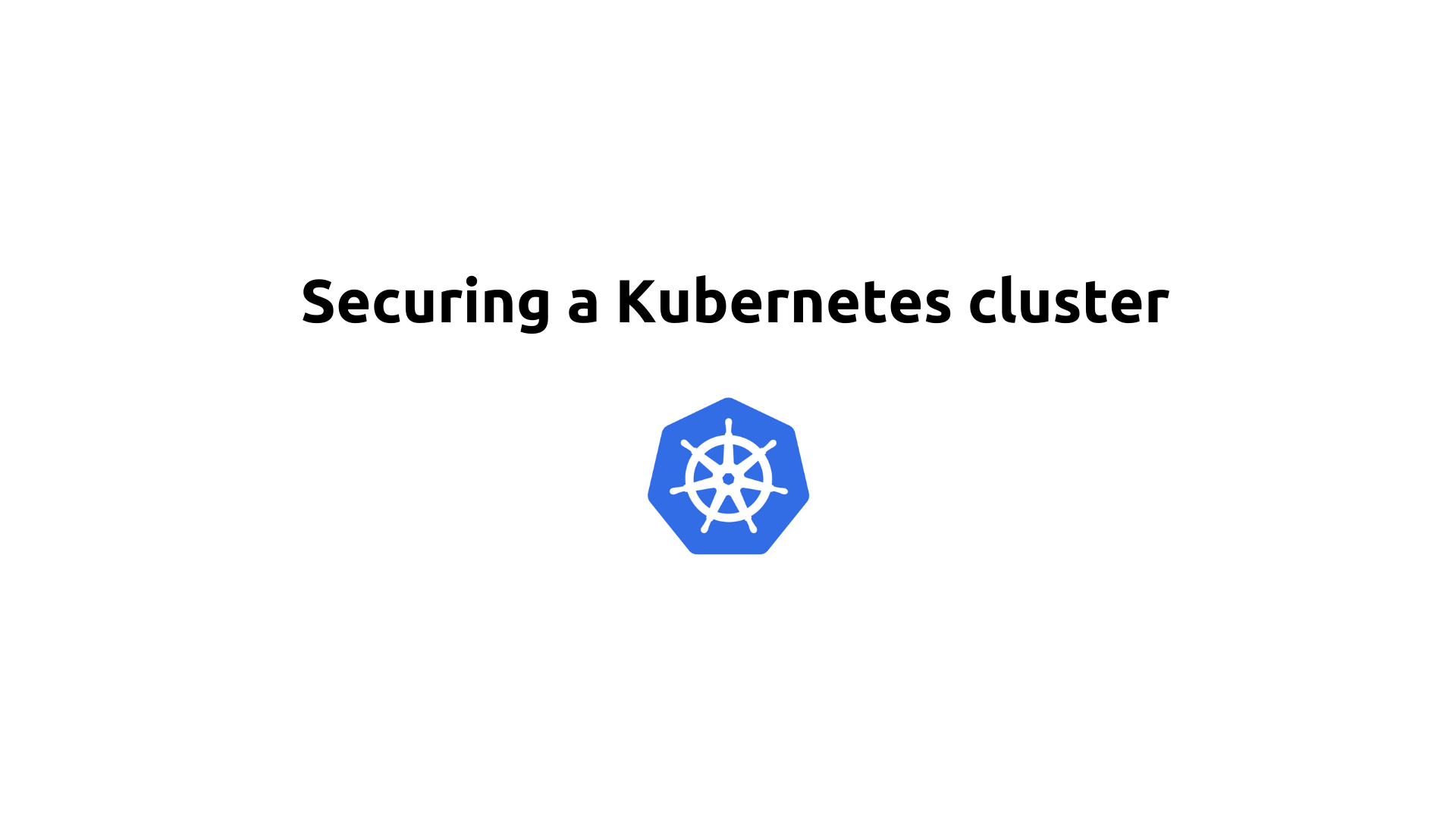Securing a Kubernetes cluster
 Saurabh Adhau
Saurabh Adhau
Securing a Kubernetes cluster involves implementing a variety of strategies to protect against unauthorized access, data breaches, and other security threats. The following comprehensive approach covers several critical areas to enhance the security of a Kubernetes environment:
1. Network Security
a. Network Policies
Use Kubernetes Network Policies to control traffic between pods. This restricts communication paths and limits exposure to potential attacks.
apiVersion: networking.k8s.io/v1
kind: NetworkPolicy
metadata:
name: allow-specific-ingress
namespace: default
spec:
podSelector:
matchLabels:
role: frontend
policyTypes:
- Ingress
- Egress
ingress:
- from:
- podSelector:
matchLabels:
role: backend
b. Segregate Network Traffic
Isolate different types of traffic (management, application, storage) using separate network segments or VLANs to reduce the risk of lateral movement in case of a breach.
2. Authentication and Authorization
a. Role-Based Access Control (RBAC)
Implement RBAC to define fine-grained access controls. Use roles and role bindings to restrict what users and service accounts can do within the cluster.
apiVersion: rbac.authorization.k8s.io/v1
kind: Role
metadata:
namespace: default
name: pod-reader
rules:
- apiGroups: [""]
resources: ["pods"]
verbs: ["get", "watch", "list"]
---
apiVersion: rbac.authorization.k8s.io/v1
kind: RoleBinding
metadata:
name: read-pods
namespace: default
subjects:
- kind: User
name: jane
apiGroup: rbac.authorization.k8s.io
roleRef:
kind: Role
name: pod-reader
apiGroup: rbac.authorization.k8s.io
b. Secure API Server
Ensure secure communication with the API server by enforcing TLS and using authentication mechanisms like client certificates, OIDC, or webhook token authentication.
3. Secure Pod Security
a. Security Contexts
Set security context at the pod or container level to control security-related configurations like running as a non-root user and dropping unnecessary capabilities.
apiVersion: v1
kind: Pod
metadata:
name: secure-pod
spec:
containers:
- name: secure-container
image: my-image
securityContext:
runAsUser: 1000
capabilities:
drop:
- ALL
4. Data Encryption
a. Encrypt Data at Rest
Encrypt data stored in etcd by enabling encryption in the Kubernetes API server configuration.
apiVersion: apiserver.config.k8s.io/v1
kind: EncryptionConfiguration
resources:
- resources:
- secrets
providers:
- aescbc:
keys:
- name: key1
secret: <base64-encoded-encryption-key>
- identity: {}
b. Encrypt Data in Transit
Use TLS to encrypt data between clients and the Kubernetes API server and between nodes within the cluster.
5. Secure Container Images
a. Use Trusted Images
Always use images from trusted registries and scan them for vulnerabilities before deploying.
b. Sign and Verify Images
Implement image signing and verification to ensure the integrity and authenticity of container images.
6. Monitoring and Auditing
a. Enable Audit Logging
Audit logs provide a record of actions taken within the cluster, which is essential for identifying and investigating security incidents.
apiVersion: audit.k8s.io/v1
kind: Policy
rules:
- level: Metadata
resources:
- group: ""
resources: ["pods"]
b. Use Monitoring Tools
Deploy monitoring tools like Prometheus and Grafana to track cluster health, performance metrics, and potential security anomalies.
7. Regular Updates and Patching
a. Update Kubernetes Components
Regularly update Kubernetes components to patch vulnerabilities and apply security updates.
b. Update Node Operating Systems
Keep the underlying node operating systems up to date with security patches to protect against known vulnerabilities.
8. Limit Node Access
a. Node Authentication
Use strong authentication methods for accessing nodes, such as SSH keys instead of passwords.
b. Restrict SSH Access
Limit SSH access to nodes, preferably through bastion hosts or jump boxes, and disable root access.
9. Secrets Management
a. Use Kubernetes Secrets
Store sensitive information such as passwords and API keys in Kubernetes Secrets, and ensure they are encrypted at rest.
b. External Secrets Management
Consider using external secrets management tools like HashiCorp Vault, AWS Secrets Manager, or Google Cloud Secret Manager for better control and auditing.
10. Implementing PodSecurity Admission (PSA)
PSA is a Kubernetes built-in admission controller that enforces Pod Security Standards (PSS) across namespaces. It replaces PodSecurityPolicies and offers three levels of security:
Privileged: Least restrictive, allows broad permissions.
Baseline: Offers a reasonable set of restrictions without too much friction for application developers.
Restricted: Enforces the strictest security policies suitable for sensitive workloads.
Example configuration for enforcing the "restricted" policy:
apiVersion: v1
kind: Namespace
metadata:
name: secure-namespace
annotations:
pod-security.kubernetes.io/enforce: restricted
pod-security.kubernetes.io/enforce-version: latest
Conclusion
Securing a Kubernetes cluster involves implementing a comprehensive, multi-layered approach that covers network security, access control, data encryption, container image security, monitoring, and regular updates. By following these best practices and leveraging Kubernetes' built-in features along with third-party tools, you can create a robust and secure environment for your containerized applications, significantly reducing the risk of security breaches and unauthorized access.
Subscribe to my newsletter
Read articles from Saurabh Adhau directly inside your inbox. Subscribe to the newsletter, and don't miss out.
Written by

Saurabh Adhau
Saurabh Adhau
As a DevOps Engineer, I thrive in the cloud and command a vast arsenal of tools and technologies: ☁️ AWS and Azure Cloud: Where the sky is the limit, I ensure applications soar. 🔨 DevOps Toolbelt: Git, GitHub, GitLab – I master them all for smooth development workflows. 🧱 Infrastructure as Code: Terraform and Ansible sculpt infrastructure like a masterpiece. 🐳 Containerization: With Docker, I package applications for effortless deployment. 🚀 Orchestration: Kubernetes conducts my application symphonies. 🌐 Web Servers: Nginx and Apache, my trusted gatekeepers of the web.